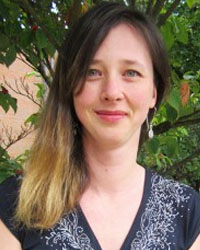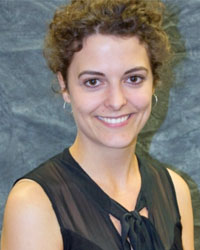Last month, four researchers were selected to have samples analyzed by the University of Tennessee, Knoxville, Genomics Core and Illumina, a company that helps analyze genetic variation and biological function using the NovaSeq 6000 Next-Gen sequencing platform. Data from these experiments are expected to provide a foundation for current and upcoming research projects and funding opportunities.
The mini grant awardees are:
 Brynn Voy, associate professor in the Department of Animal Science. Voy’s project, “Characterizing Adipogenic Regulation of Fibro-adipogenic Precursors with the NovaSeq 6000” will use RNA sequencing to characterize the transcriptome of a specialized muscle stem cell population that may contribute to the development of myopathic lesions. Broiler chickens are susceptible to developing degenerative muscle myopathies that compromise breast meat quality. Many of those same pathological features are also found in myopathies of various origin in humans, such as Duchenne’s muscular dystrophy and age-related sarcopenia. Voy’s research seeks to better understand the genetic control of these lesions, with applications for both agriculture and human health.
Brynn Voy, associate professor in the Department of Animal Science. Voy’s project, “Characterizing Adipogenic Regulation of Fibro-adipogenic Precursors with the NovaSeq 6000” will use RNA sequencing to characterize the transcriptome of a specialized muscle stem cell population that may contribute to the development of myopathic lesions. Broiler chickens are susceptible to developing degenerative muscle myopathies that compromise breast meat quality. Many of those same pathological features are also found in myopathies of various origin in humans, such as Duchenne’s muscular dystrophy and age-related sarcopenia. Voy’s research seeks to better understand the genetic control of these lesions, with applications for both agriculture and human health.
 Elena Shpak, associate professor in the Department of Biochemistry and Cellular and Molecular Biology. Shpak’s project, “Identification of Gene Networks Regulated by ERECTA Family Receptors during Morphogenesis” will examine the role of the ERECTA gene family (ERf) on the regulation of plant architecture, such as the number and shape of leaves and the elongation of stems. Additionally, modification of ERf signaling alters stomata density and, consequently, drought resistance. Understanding the effect of ERf on morphogenesis provides a potential handle to alter plant architecture in an effort to improve agriculturally important crops.
Elena Shpak, associate professor in the Department of Biochemistry and Cellular and Molecular Biology. Shpak’s project, “Identification of Gene Networks Regulated by ERECTA Family Receptors during Morphogenesis” will examine the role of the ERECTA gene family (ERf) on the regulation of plant architecture, such as the number and shape of leaves and the elongation of stems. Additionally, modification of ERf signaling alters stomata density and, consequently, drought resistance. Understanding the effect of ERf on morphogenesis provides a potential handle to alter plant architecture in an effort to improve agriculturally important crops.
 Katharina M. Höland, graduate teaching assistant in the Department of Chemistry, in partnership with Hector F. Castro, research associate in the Department of Chemistry, Timothy E. Baumann, research associate professor in the Department of Anthropology and curator of archaeology at the McClung Museum, and Shawn R. Campagna, professor and associate department head in the Department of Chemistry and faculty fellow for ORE’s Research Development. Höland’s project, “The Beanome Project: A Bio-Cultural Study of the Common Bean (Phaseolus vulgaris) in the New World” is designed to better understand the importance of the “Three Sisters” agricultural system of beans, maize, and squash, as well as the movement of people and plants in North America. Radiocarbon dates have documented beans arriving after AD 1300 during a time of environmental and socio-political stress, and this research can illustrate how beans can help humans to adapt to climate change and future population growth.
Katharina M. Höland, graduate teaching assistant in the Department of Chemistry, in partnership with Hector F. Castro, research associate in the Department of Chemistry, Timothy E. Baumann, research associate professor in the Department of Anthropology and curator of archaeology at the McClung Museum, and Shawn R. Campagna, professor and associate department head in the Department of Chemistry and faculty fellow for ORE’s Research Development. Höland’s project, “The Beanome Project: A Bio-Cultural Study of the Common Bean (Phaseolus vulgaris) in the New World” is designed to better understand the importance of the “Three Sisters” agricultural system of beans, maize, and squash, as well as the movement of people and plants in North America. Radiocarbon dates have documented beans arriving after AD 1300 during a time of environmental and socio-political stress, and this research can illustrate how beans can help humans to adapt to climate change and future population growth.
 Brittany N. Zepernick, doctoral candidate in the Department of Microbiology, in partnership with Eric R. Gann, post-doctoral research associate in the Department of Microbiology, and Steven W. Wilhelm, Kenneth and Blaire Mossman Professor and associate department head in the Department of Microbiology. Zepernick’s project, “Developing a Foundational Toolset for Freshwater Diatom -omics Research” will fully sequence the genomes of two evolutionarily distinct North American freshwater diatoms, Fragilaria crotonensis and Stephanodiscus binderanus. These genomes will then be fully annotated, establishing both as model systems for reference in current and future freshwater diatom -omics research. Zepernick’s work seeks to better understand the effects of climate change and anthropogenic stressors on fresh waters by establishing foundational systems to assess gene expression by comparative genomics for marine and freshwater diatoms.
Brittany N. Zepernick, doctoral candidate in the Department of Microbiology, in partnership with Eric R. Gann, post-doctoral research associate in the Department of Microbiology, and Steven W. Wilhelm, Kenneth and Blaire Mossman Professor and associate department head in the Department of Microbiology. Zepernick’s project, “Developing a Foundational Toolset for Freshwater Diatom -omics Research” will fully sequence the genomes of two evolutionarily distinct North American freshwater diatoms, Fragilaria crotonensis and Stephanodiscus binderanus. These genomes will then be fully annotated, establishing both as model systems for reference in current and future freshwater diatom -omics research. Zepernick’s work seeks to better understand the effects of climate change and anthropogenic stressors on fresh waters by establishing foundational systems to assess gene expression by comparative genomics for marine and freshwater diatoms.
In addition to providing researchers with critical preliminary data, the goal of this mini grant program is to help facilitate the potential placement of a NovaSeq 6000 on campus. To learn about the capabilities of the Illumina NovaSeq 6000 instrument, visit the Illumna website.